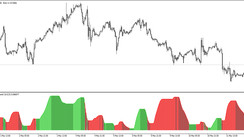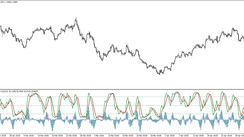Central banking in the 21st century faces challenges not known before. Controlling inflation and economic growth using interest rates cuts or hikes isn’t enough anymore.
Bankers around the world agree that healthy economic growth requires moderate inflation. As such, the official mandate of a modern central bank targets inflation below or close to two percent.
When inflation deviates from the target, central banks act. Higher inflation triggers rate hikes, while lower inflation ignites rate cuts.
In a dual process called market easing or tightening, central banks change the interest rate level to tackle inflation. Basically, all the monetary policy tools are used to bring inflation to target.
However, this has been a challenging process lately. Capitalism, as we know it, posses specific situations in different parts of the world.
The same recipe to fix inflation challenges in one country, may not work in another. As such, central banks use different monetary tools to stimulate economic growth.
Federal Reserve of the United States
Known as one of the most proactive banks in the world, the Fed sets the interest rate level for the U.S. Dollar, the world’s reserve currency. Because all commodities are traded in dollars (e.g., oil), there is a constant demand for dollars from outside America.
Hence, when the Fed sets the federal funds rate, it considers outside factors too, not only internal economic conditions.
Fed looks at inflation as stimulating growth and fought for years to bring it up to the desired target. While not there yet, inflation is on the rise and the Fed’s strategy after the 2008 financial crisis worked.
However, it wasn’t a smooth path. After engaging in the classic monetary policy easing (e.g., lowering the interest rates to zero), the Fed faced an unprecedented situation: inflation didn’t rise, and the economic pick up failed to materialize.
Hence, Fed was forced to engage in unprecedented monetary policy measures. In a process called quantitative easing (QE), it started buying U.S. government bonds.
No less than four rounds of bond-buying were needed to turn the inflation trend. And, the policy was soon copied by other major central banks in the world.
Bank of Japan
Despite doing the same, Bank of Japan has a more difficult task. Because of the aging population and the uniqueness of the Japanese society, immigration is low in Japan.
This results in demographic problems as older people tend to spend less. Less spending leads to deflation, and this is where Bank of Japan has a big problem.
For over two decades, it tried in vain to push inflation to the target. No inflation means less or no economic growth, and the trap for the central bank is evident.
Currently, Bank of Japan still buys government debt, together with other assets. To this day, it has a problem stimulating the economy via conventional and unconventional monetary policy tools.
Conclusion
The two central banks used as examples show how similar monetary policy leads to different results. They are the extremes in 2018 central banking.
Other parts of the world face economic challenges too. As such, central banks “innovate” or “experience” new ways of solving financial issues. For example, the European Central Bank (ECB) and the Swiss National Bank (SNB) hold the critical interest rate level below zero in sharp contrast with the Fed in the United States.
To sum up, despite globalization, monetary policy still needs local solutions. Now, the unconventional measures are part of the monetary toolkit.
About the Author
Team AMarkets
Founded in 2007, AMarkets is an award-winning global forex and CFDs broker. AMarkets is a reliable brokerage company with excellent reputation, regulated by the Financial Commission, and successfully audited by Ernst&Young.
The broker offers trading services on wide selection of products such as bonds, currency pairs, metals, commodities, cryptocurrencies, and equities. Using the latest trading technologies, AMarkets today handles up to 10,000 trading transactions a day in a safe and secure environment. Test AMarkets' trading terms and feel the difference!





